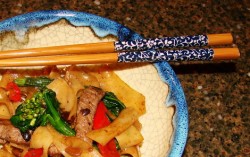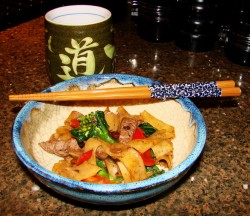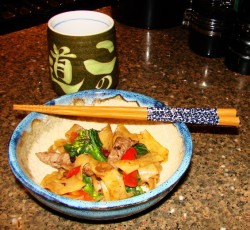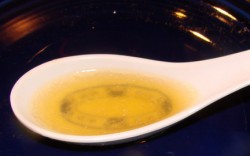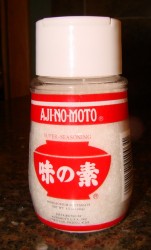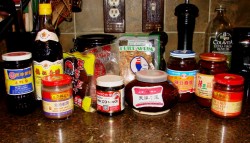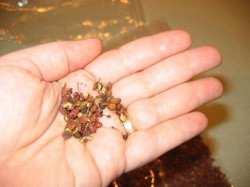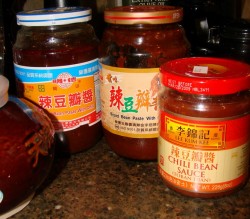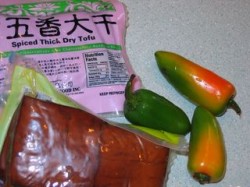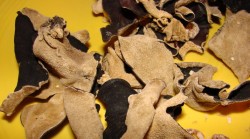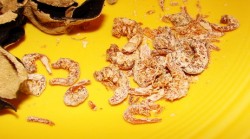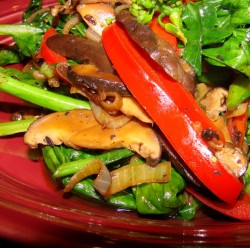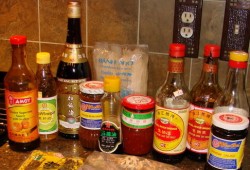Fun With Chow Fun
Chow fun is a transliteration from the Cantonese, which means “stir-fried rice noodles;” the Mandarin transliteration would be “chao fen.” It does not have anything to do with the English slang word, “chow,’ meaning “food” and “fun”, meaning “fun.” No, it does not mean “food that is fun,” though I do think it is fun to eat and now I am pretty sure it is fun to cook, too.
The Cantonese name is the one by which this dish is most commonly known in American Chinese restaurants, however, in large part because the first waves of Chinese immigrants to the shores of the United States came from Guangdong Province, formerly known as Canton. Thus, much of what many Americans think of as “Chinese” food is Cantonese food that has been adapted to Western tastes and available ingredients; the deep influence of Cantonese cuisine upon our perceptions of the myriad cuisines that make up Chinese food in the US is hard to overstate.
Chow fun is one of the dishes that is often found on Chinese restaurant menus here in the US, and it is properly made with soft, fresh rice noodles cut into 1/2 to 3/4 inch widths. These noodles, known in Cantonese as “ho fun” or “hor fun,” and in Mandarin as “shahe fen” or “he fen”, are soft, chewy and have a special stretchy texture which is distinctive and very interesting on the tongue. Most restaurants use a great deal of oil in cooking these noodles, because in part, they require a good bit of lubrication to keep them from sticking to a hot wok. They can be served either “dry” where they are cooked with a meat and vegetables and no sauce to speak of, or “sauced.” where the noodles, meat and vegetables are moistened with a savory sauce.
I prefer the sauced version myself, as I have found that the unsauced noodles to be a bit too greasy feeling for my taste, but there are others who swear that the dry versions are best.
A classic Cantonese teahouse dish is chow fun made with beef, mushrooms and bean sprouts, stir fried in a light sauce. It goes very well with pu er tea; a fermented, aged tea that has an earthy, deep aroma and flavor that goes very well with rich foods. It is said to help the digestion and it is believed to help lower cholesterol, though I have not seen any peer reviewed articles on that particular claim in any medical journals, so don’t take my words as gospel truth.
My very favorite version of it is the decidedly untraditional but delicious one at Noodles Corner in Columbia, Maryland, with beef, fermented black beans and broccoli. It is delicious, filled with the bittersweet savor of the broccoli and the strong flavor of the beef, tied together with the funky and fantastic aroma of the fermented black beans.
I have to admit to making my version of chow fun with half inch wide dried rice noodles; fresh rice noodles of the type used to make real chow fun are nearly impossible to come by in my section of Ohio. I was concerned about that, thinking that I wouldn’t be able to make a good chow fun without the proper fresh noodles, but none other but cooking teacher and cookbook author Florence Lin said that she preferred dried rice noodles to fresh because they were more consistent and versatile to work with. She gave a chow fun recipe in her seminal work, made with rehydrated rice noodles. Taking my cue from her experience and wisdom, I decided that just because I couldn’t get proper ho fun, didn’t mean I couldn’t have fun with making my own chow fun at home.
I decided to eschew the traditional mushrooms and bean sprouts since Zak doesn’t care for either of them and replace them with gai lan and sweet red pepper. This would approximate the flavor and color palette of my favorite chow fun at Noodles Corner while using my favorite Asian vegetable of all time–gai lan is the best green in the world, as far as I am concerned. I kept the fermented black beans in the dish, and added onions, garlic, ginger, a single fresh chili from my Kung Pao chili pepper plant, and a good amount of ground bean sauce to the aromatics in the stir fry. These combined to make the noodles rich with umami scent and flavor, with tender beef, crunchy gai lan stalks and pepper slices, and velvety gai lan letaves.
Though the noodles lacked the slightly stretchy, chewy quality that fresh ho fun have, they were still wonderful, soft and slippery, soothing and yet still toothsome ribbons that carried the other flavors beautifully, contrasting with all the other textures like a symphony in the mouth.
When the dish was done, I was pleased to discover that I could use much less oil than traditionally called for in the cooking of the fresh noodles, which lightened the finished flavor considerably. Al though my first impulse was to call these noodles “faux chow fun,” I changed my mind and called them “fun chow fun” because I liked playing with the homophones which have different meanings but still point to a singularly good kitchen experience.
Lighter it may have been, but Zak and I discovered that this version of beef chow fun still went hand-in-hand with pu er tea. The dark forest flavor and scent of the tea cut through the vivid flavors of the noodles, cleansing the palate and allow us to savor each bite as if it were our first.
Ingredients:
1/2 package of 1/2″ wide flat dried rice noodles
water as needed
1/2 pound top round or sirloin, cut into thin strips–2″X1/2″X1/4″
1 tablespoon dark soy sauce
1 tablespoon Shao Hsing wine
1 teaspoon raw or brown sugar
1 tablespoon cornstarch
3-5 tablespoons peanut or canola oil
1 cup thinly sliced onion
3 cloves fresh garlic, peeled and thinly sliced
2″ cube fresh ginger, peeled and sliced thinly
1 fresh red chili pepper, thinly sliced on the diagonal (optional)
2 tablespoons fermented black beans
2 heaping tablespoons of ground bean sauce
1/2 pound gai lan, bottoms trimmed, stalks cut into thin slices on the diagonal, leaves cut into bite sized chunks
1 small sweet red pepper, cut into slices the same size as the beef
1 tablespoon dark soy sauce
1/4-1/2 cup chicken broth or stock (I used the chicken-pork stock I made last week–it really tasted good here!)
1 teaspoon toasted sesame oil
Method:
Soak the noodles in very hot water to cover until they soften–about on half hour to forty-five minutes.
Bring a pot of water to boil, and add noodles. Allow to boil for a mere thirty seconds, then drain. Rinse well in hot water, then cold water, and fluff with hands coated in a bit of your cooking oil to keep them from sticking to each other.
Mix beef with next four ingredients and allow to marinate while doing other prep work–marinate at least twenty minutes, but no more than an hour.
Heat wok until it smokes. Add three tablespoons of oil–leave the rest of the oil to be used only if you need it.
Add onion and cook, stirring, until it browns lightly. Add garlic, ginger, chili and fermented black beans, and cook, stirring, for another thirty to sixty seconds, or until very fragrant. Add beef all in one layer in the bottom of the wok, and leave it undisturbed for about a minute to brown on the bottom. Then begin stir frying vigorously. When most of the beef is brown and is showing very little red, add the ground bean sauce and the soy sauce. Stir and fry for another thirty seconds, then add gai lan.
Cook, stirring until leaves wilt. Add sweet pepper and drained noodles. Add smaller amount of stock or broth and cook, stirring, until the meat is brown, the gai lan leaves are well-wilted, the noodles are well-mixed and starting to brown a bit and curl on the edges, and everything comes together in a very light brown sauce that coats everything evenly, but does not slosh around in the wok. If you need to add more oil or broth to the noodles to keep them from sticking, do so, but do it in small increments. You don’t want to make the noodles either greasy and heavy with oil or overcooked and mushy with the broth, so be sparing in your additions. I only used three tablespoons of oil and a scant quarter cup of broth in my chow fun, and it turned out really well. Be judicious.
When dish has come together, drizzle with sesame oil, give it a quick stir or two to combine and scrape into a serving bowl or platter.
This makes enough for 2-4 people, depending on appetite and whether or not you are serving other dishes with this as a meal. With this as a one dish meal, Zak and I ate comfortably, and there was enough left over for Morganna to take to school for lunch the next day. It is good at room temperature, or reheated in the microwave.
The Not-So-Secret Secret Ingredient To Roast Pork Noodle Soup
Zak and I were sitting with Kat, all of us with a bowl of roast pork noodle soup in front of us (well, Kat had noodles with minced up bok choy, finely minced roast pork and a bare dribble of soup in her bowl) and we were eating happily.
Zak looked up thoughtfully from his bowl and said tentatively, “You know, this is awesome–but there is something not perfect about the broth. It is missing something.”
Now, he wasn’t telling me anything I didn’t already know. The broth was excellent, very flavorful, meaty and rich, with great body and aroma. It was a dark golden color from the soy sauce and Shao Hsing wine and the drizzle of toasted sesame oil gave it just the perfect tinge of nutty smokiness.
But still, there was something missing.
It wasn’t sugar–there was just enough in it to enhance the pork and bok choy flavors without making it taste like “candy soup,” which has a definitely unappetizing sound to it. It wasn’t lack of white pepper, nor was it that the stock was too weak–the main flavor was meat.
Zak and I talked about it while we each offered Kat spoonsful of broth from our own bowls to slurp. He said, quite clearly as he took another sip, “It has something to do with the meat flavor–it is almost right, but not quite.”
I finally stood up and sighed. “I bet I know exactly what it is,” I stated, as I strode purposefully to the kitchen, opening the spice cabinet. I plucked out a jar I have had for ever, but which I have never opened.
I carried it back to Zak and cracked it open. Over my bowl of broth, now swept clean of noodles, pork and greens, I sprinkled a few grains of sparkling crystalline white powder.
“What’s that?” Zak asked.
“MSG,” I said. I handed him the jar, and said, “I kind of wondered when I was cooking this if I shouldn’t add some, but it goes against my nature to do it. I thought about using Chinese black mushrooms or kelp to get enough glutamates in the broth, but they both have their own flavors which come along for the ride, which would clash with this dish.”
He sprinkled a few grains into his bowl, stirred it and took a sip. The umami flavor which had been missing–that meatiness, that savory component–it had arrived.
His eyes lit up. “It is almost like a whole new broth. You are right. It’s perfect.”
I tasted mine. He was right. The broth was taken to another level: it was meaty and savory and wonderful, with all of the natural flavors enhanced perfectly. That was the not-so-secret secret ingredient to make my soup taste just like the ones from our favorite noodle shops. A little tiny sprinkle of MSG. It is amazing how little was needed to add that last bit of oomph.ZZ
So, what do I suggest you do if you want to recreate this recipe?
Well, if you are opposed to MSG as an ingredient, or are sensitive to its effects, I suggest you just do without. In truth, the soup tasted plenty wonderful without it, such that Zak kept repeating as he ate his first bowl of it, “I love you, I love you. Oh, I love you.”
So, the soup was fine, really.
But, if you want it to taste just like you remember from some noodle shop somewhere, wait until you have poured the hot soup over the noodles, pork and greens in a bowl. Then, sprinkle a few grains of MSG, known in Japanese as Aji-no-moto, over the broth and give it a stir with a chopstick. I am of the opinion that it is easier for you to season it by the serving than by the potful–it would be too easy to end up using too much MSG if you try to season several quarts of soup broth at a time.
Remember, you want to use as little MSG as possible if you use it at all. If you overuse it, instead of enhancing the flavor of your food, it will flatten it out and make it one dimensional. And you might end up unintentionally giving your guests a headache.
And if you don’t want to use it–that is fine, too. Your soup will still be good without it.
For thoughts on MSG and health, check out my earlier posts:Let’s Talk About MSG and More on MSG and Glutamates
The Intermediate Chinese Pantry
Six months ago, I wrote a post entitled “Staple Ingredients of the Chinese Pantry” where I listed the basic must have goodies for a budding Chinese cook. And the post was a great success, and it helped a lot of folks out and almost immediately, readers were asking for a follow-up on what to buy next.
Well, finally, here is the post that lots of folks have been waiting patiently for, and emailing me about, and I really hope you all find it as helpful as the first one–remember that this list is my own personal opinion on where you can go next in your explorations of Chinese cookery. Adding these ingredients will allow you to make some really great regional classics of Sichuan, Canton and Hunan, and will broaden your tastes a little. These ingredients will give you plenty of new flavors, fragrances and textures to experiment with while you come up with some of your own recipes.
And while you are at the Chinese market, you are going to see lots of other ingredients that I haven’t listed here. Stuff that you may not recognize, but which looks intriguing to you.
Things such as kekap manis–a thick, sweet soy sauce from Indonesia. Or, fermented “stinky” tofu packed in jars with chile paste.
By all means, let me encourage you, that if you have the money, the inclination and the pantry space, to pick up whatever items appeal to you, and experiment. In truth, that is how I have come by most of my knowledge of Asian ingredients: I go to the market, I see something I either don’t recognize, or have only read about in books, pick it up, buy it, take it home and try it out. Some of them, like kimchee, have become fixtures in my kitchen, while others, like the fermented tofu, have been banned forever by Zak and Morganna, who cannot abide the smell. (Whereas I rather liked it.)
I suspect that all of you understand that most of these items are not available in American grocery stores. You are going to have to visit an Asian market or order online for these ingredients. And that is fine–even if there isn’t a market close to you, save your shopping for the next time you take a road trip to the closest big city. Take the list with you, and make an event of your shopping expedition. Have an adventure–it is fun!
Sichuan Peppercorns: These are the tiny dried pods of the fruit of trees of the genus Zanthoxylum, known in English as the mountain ash or prickly ash. These dark russet to brown little pods look vaguely like opened flower buds, and are piquant, with a chilly, numbing quality that is prized among Chinese chefs and home cooks, particularly those of Sichuan province. Known in Chinese as huajiao, Sichuan peppercorns, are also a component of Chinese five spice powder.
They are used whole in soups and long-braised dishes, such as Sichuan beef with turnips, and ground, in Kung Pao Chicken. I have even used them ground up in cookies to amazing effect. If you do not have an Asian market near you, you can order them online at Penzey’s; I keep mine in the freezer, triple wrapped, for maximum freshness, and only grind them right before using them. I also find that toasting them briefly in a small cast iron skillet before grinding them brings out the greatest flavor. For more information on Sichuan Peppercorns, see a previous post on the subject.
Star Anise: This beautiful star-shaped spice is the pericarp of a small evergreen tree native to China. Star anise, known in Chinese as bajiao, lends its sweet, licorice-like flavor to five-spice powder. It is essential in braised dishes such as Red Cooked Pork with Taro and Sweet Potato. In fact, if you want to make any Chinese braised dishes at all, I would highly suggest getting some star anise, as its flavor is a necessity in those types of dishes, particularly the ones containing red meats such as pork, beef and lamb. It is also useful in Indian cookery, and it is very good brewed with oolong teas; when I have a cold, I like to make a tea with oolong, Sichuan peppercorns, stick cinnamon, cardamom and star anise.
I keep mine in the freezer in order to keep them at maximum flavor and freshness. They are sold in little cellophane packets in the spice and dried foods section of most Asian markets, but if you do not have one near you, once again, you can order these from Penzey’s.
Chili Bean Paste/Sauce: This is an essential ingredient for Sichuanese cookery. Made with fermented soy and broad beans, wheat, salt and chilies, this salty, spicy, dark red condiment is filled with delicious umami flavor, and is the ingredient that gives Sichuan red-cooked meats (such as Beef with Turnips) and Ma Po Tofu its intensity and fragrance. The best brands are actually made fully with broad beans and include the words, “broad bean” on the label. Chili black bean sauce is not the same thing; the flavor profile is completely different and it would never give the correct Sichuanese flavor to the dishes meant to be made with true Sichuanese broad bean chili paste.
My favorite brand that is easily fround in most Asian markets around here is made in Taiwan by Ming Teh Food Industry. The two jars pictured on the left above are both from Ming Teh–they just recently changed their label. The one on the far left is the older label, and the one in the middle is the newer one. They both contain the same sauce: very thick, with a somewhat liquid paste-like consistency, deep red and pungent with a few lumps of intact broad bean left. It is quite spicy, and only moderately salty, with a hefty dose of umami savoriness that gives many Sichuanese recipes their unique character.
Lee Kum Kee makes a version of this sauce which is passable. It is saltier than I would like and not as complex in flavor, but it is acceptable. It is also quite easily found not only in Asian markets but in some American grocery stores as well.
I store this sauce in my refrigerator after it is opened, and it keeps forever. The amount of salt, lactic acid from the fermented beans and chilies pretty much keep all harmful bacteria at bay.
Tianjin Preserved Vegetables and/or Sichuan Preserved Vegetables (Zha cai): I generally have both of these in my kitchen at any given time, however, presently, I only have the Tianjin preserved vegetables from the Tianjin Leiching Pickle Company. They are different, but the flavor profile is similar enough that I have found I can use them in many recipes interchangeably. The Tianjin vegetable is basically a pickled Chinese cabbage made with the lactic acid fermentation process. Garlic is generally added to the pickling mixture, and this gives the cabbage, which has a distinctive crunch, a hauntingly robust flavor. It is used to flavor soups, braised dishes, noodle dishes and stir fries.
The brand that I buy from the company mentioned above comes packed in the beautiful round earthenware crock you can see in the photograph at the beginning of this post.
I just keep it in its crock, sealed tightly with its own plastic cap, in the refrigerator and I have never had anything go awry with it, no matter how long I keep it. Salt-preserved fermented vegetables will keep nearly forever so long as you use a clean utensil to get some out of the crock before sealing it back up again. (Dirty fingers are a no-no.)
Sichuan Preserved vegetable, also known as Zha cai, is the pickled stem of mustard greens. Like the Tianjin preserved vegetable, this is a salted pickle, preserved with a lactic acid fermentation, but instead of being flavored with garlic, the Sichuan version is flavored with a great deal of ground chili pepper.
Before using the Sichuan preserved vegetable, it is best to rinse off the excess salt and chili, then drain it or pat it dry with a towel. Zha cai adds flavor to Sichuan dry fried green beans, and is delicious cooked with noodles or in a stir fry with pork or tofu. It is great in hot and sour soup, too.
The brand that I usually buy, Ma Ling, comes in a can with a red and yellow label. After opening it, I usually put the remainder that I do not use right away into a glass jar and keep it tightly sealed in the fridge.
Pressed Spiced Tofu/Spiced Dry Tofu: Known as either pressed spiced tofu or spiced dry tofu, this is one of my favorite styles of bean curd to use in Chinese or Thai cookery. It is very firm, having had almost all of the water in the product pressed out, after it has been marinated in a spiced liquid. The resulting low-fat protein source is pale tan on the inside and reddish brown on the outside, and has a chewy, meaty texture that is uniquely smooth and quite pleasant. Cut into thin shreds it can be used marinated in noodle salads, cut into very thin strips, it can be stir fried or dry fried until it curls into crisp-chewy petals. Cut into medium thin to thick strips, it can be stir fried or braised.
The brand I use, pictured above, is made by Water Lilies Foods, and the purple, orange or green packages are available in the refrigerated section of most Chinese markets. The different colors on the packets denote different thicknesses of the tofu blocks. Left in its vacuum-sealed package, it lasts quite a long time-just look for the “use by” date stamped on it. Once it is opened, if you have any leftovers, they can be sealed in a ziploc bag for only a few days before it starts to go off.
I use this tofu all the time, and have some in my fridge for a quick stir fry on the spur of the moment, when I have no idea what else to do with it. One of the best dishes using spiced dry tofu as a main ingredient is Spicy Pork With Pressed Beancurd Stir Fry, which I learned from House of Hunan, an excellent restaurant in Columbia, Maryland.
Rock Sugar: Rock sugar, also known as crystal rock sugar or rock candy, is made from a solution of white sugar, brown sugar, honey and water, brought to a boil. The syrup is allowed to crystallize, and it forms beautiful lumps of yellowish sugar candy which look rather like rough citrine gemstones. Rock sugar is used as a flavoring agent in braised dishes, primarily red cooked dishes from southern China, but it isn’t just a sweetener. The flavor is unique, in that it partakes of both the flavors of brown and white sugar, and the fragrance of honey, but it can be approximated by using raw sugar mixed with honey in a recipe.
What cannot be replicated is the beautiful glossy sheen that rock sugar gives to the red-cooked dish’s braising liquid. The sauce, when reduced becomes a shimmering glaze that looks like molten amber glass–it is uniquely beautiful and is well worth the trouble and tiny expense of picking up a small bag of this particular sugar.
To use it, one needs to break up the big crystals into smaller, more usable chunks. You can use a hammer, but I like to just break them up in a marble mortar and pestle. Once they are in smaller chunks, it is simplicity itself to just grind those into a rough powder which will dissolve easily in simmering liquid.
Then you just add it to the braising liquid, and then let the dish bubble away, and it will cook down to create a beautiful, fragrant one pot meal with an incomparably flavored and scented shining sauce.
On of my favorite recipes using rock sugar is the Cantonese Red Cooked Pork With Taro and Sweet Potato.
Cloud Ear/Wood Ear/Black Fungus: This unusual ingredient is what is known in China as a “texture food.” The Chinese feel that the texture of a food is just as important as its flavor, scent and color, so there are certain foods which are eaten just because they feel interesting on the tongue, teeth and lips.
Cloud ear fungus is added to dishes not because of its flavor, but because of its unique and interesting texture–it is crisp, slightly rubbery and it squeaks against your teeth a bit when you chew it.
Cloud ear fungus grows on trees, and is dried soon after it is harvested. Its jet black color is a secondary reason it is used–that color can provide contrast with a pale colored meat or brightly colored vegetables in a dish. When you pick up a bit of it while it is dry the black side is smooth and crisp feeling, while the greyish underside has a somewhat flocked texture, like roughly worn velvet.
It must be rehydrated before it is used, an operation which is simplicity itself. All you need to do is cover the fungus pieces with hot water and allow them to soak it up for about ten or fifteen minutes. When it is rehydrated, the fungus expands to be about 2/3 larger than it started out, and the texture changes considerably. The napped grey side loses its softness and the fungus becomes uniformly rubbery and somewhat leathery. Once it has soaked sufficiently, drain away the water–just discard it–it is of no use since the fungus has no flavor, and turn it to the grey side. On the underside, you will find a bunched-up, knotted bit that looks crinkled and has a woody texture. This is where the fungus was attached to the tree. Trim that off with your knife, and then you can cut the fungus in whatever way you like.
Most often used in thin shreds, cloud ear fungus can be found pre-cut into shreds that resemble tiny black twists of leather. Or, you can buy it in larger pieces, and roll each bit into tight cigar-like shapes, then cut them into thin shreds.
Dried Shrimp or Shrimp Sauce: Dried shrimp are salted, small headless or whole shrimp which have been dried in the sun or freeze-dried. They are pinkish grey to grey, and they smell either briny or slightly fishy. They are sold in cellophane packages, in the dried food section of the market.
You can keep them, double-wrapped, in the freezer or in an airtight cannister in your cabinet. I use them frequently enough, I don’t bother with the freezer option.
They have to be rinsed before use, to remove excess salt, much like the Sichuan preserved vegetable, and they have to be rehydrated, like the cloud ear fungus. Just give them a rinse in cold water, and then soak them in hot water until they soften and become leathery, instead of crispy. Rinse them again, and they are ready to use.
I like to use them in Sichuan Dry Fried Green Beans; they add a wonderful, indefinable savor of the sea to the minced aromatics, and along with the preserved vegetable, they bring a delightful hit of umami oomph. I also like them in the fillings of some dim sum dishes and, ground finely, in some stir fries.
Shrimp sauce is essentially pureed fermented salted shrimp. Lee Kum Kee makes a version of it that is high quality.
This greyish pink paste is very smooth, and very, well–fragrant. It is very strongly scented, and used judiciously, it brings an oceanic flavor to stir-fry sauces. I prefer the more mild flavor of the dried shrimp myself, however, and I find that they keep better in the long run. (And, they make fun kitty snacks. Just toss one to your cat to see them leap and chase after it, pounce upon it and devour it. Such good fun!)
Chinkiang Vinegar: Also known as Chinese black vinegar, chinkiang vinegar is sweet, with a deeply nuanced, slightly smoky flavor. Made from glutinous rice in Chinkiang, in southern China, this vinegar is used in dipping sauces, braised dishes, soups, and in noodle dishes. It is one of the secrets of Sichuanese Fish Fragrant Sauce, known in American Chinese restaurants as “Garlic Sauce,” and it gives a definite tang to some version of Kung Pao Chicken.
The highest quality brand on the market is Gold Plum, which has a yellow, red and gold label and comes in a tall bottle as you can see on the left in the first photograph in this post. It is available in most Asian markets and even in some American grocery stores.
In a pinch, you can use balsamic vinegar in the place of it–the flavors are similar, but not the same. To my taste, the chinkiang vinegar is sweeter and smokier than most balsamic.
It keeps forever, opened, in a dark place at room temperature.
XO Sauce: XO sauce is a fairly new addition to the Chinese pantry: it was invented in the 1980’s among the haute Cantonese chefs in the trendy, bustling Hong Kong restaurant scene.
A sauce made of dried seafood ingredients long prized in Cantonese cookery such as dried scallops (conpoy), shrimp and fish which have been minced or ground up and cooked with chili, onions, garlic and oil, XO takes its name from the designation for extra-old cognac. Cognac was a very popular drink at that time, and was a status symbol, and as such, the designation XO became symbolic of wealth, power and luxury.
XO sauce was once used primarily by chefs, but now it is bottled by several companies, including Yank Sing, Lee Kum Kee and Amoy. I have used both Yank Sing and Amoy and have been impressed with both of them.
XO sauce is very strong in flavor, so a little goes a long way. Used in small quantities along with Shao Hsing wine, soy sauce and sesame oil, it can impart a mysterious richness to a stir fried dish, particularly one containing a sensually textural vegetable like eggplant or a delicately flavored seafood like freshwater shrimp.
Once the jar is opened, I keep it in my fridge, and so far, it seems to keep forever.
Thick Soy Sauce: Thick soy sauce is a dark soy sauce which has had a bit extra wheat added during the fermentation process. During later stages of fermentation, sugar and molasses are added, making the finished product a thick, dark black sauce with a syrupy consistency, which has a pronounced sweetness.
This is what is used in restaurants to give fried rice its characteristic dark brown color and slightly sweet flavor. Most home cooked fried rice dishes are pale, but Americans are used to the dark brown rice dishes from restaurants, so if you want to replicate that flavor and color, go for a jar of Koon Chun thick soy sauce. All of Koon Chun’s labels are similar, blue, yellow, white and red, with Chinese lettering on one side and English on the other. (If you can read Chinese, you will note that the Kun Choon sauce in the photograph at the top of this post is actually hoisin sauce–my thick soy sauce jar had stains from the sauce all down it and was not fit for public viewing. Rather than run out and get another full jar, which I did not need, I used the hoisin sauce jar for the picture instead. Who ever said the camera cannot lie?)
Also useful for coloring other foods, such as gravies, sauces and soups, I find that I have used thick soy sauce in many unexpected places to great effect. It has turned out to be a great kitchen helper, even if I use it “off-label” more often than not. I have also used it in dipping sauces for dim sum as well, and it is good in cold noodle dressings to give an appetizing color and slight sweet flavor.
I must caution you, however, that a little of this sauce goes a long way. It is strong, so use it by the half teaspoon to teaspoon measurement, and go easy on it. You don’t want all of your food to taste sugared or to have a molasses aftertaste.
Once opened, I keep it in the fridge, and it keeps forever.
Those are the ingredients I think would make up a good start towards a well-stocked intermediate Chinese pantry. I am sure there are other condiments, spices, and sauces I could have put on this list, and maybe later, I will add to it. If I do, I promise not to wait six more months before getting around to it!
Morganna’s Simple Vegetable Stir Fry Using Barbara’s Rules of Three
To test my theories on making simple Chinese stir fries, Morganna set out to follow my Rules of Three, and concoct a vegetarian dish to accompany another stir fry I was making that included meat.
Morganna is generally no better at following formulas and recipes than I am, but she stuck to the premise of my posts, and came up with a very simple recipe that she thought was tasty, nourishing and aesthetically pleasing.
In my posts, I have suggested using only three main ingredients: a protein or mushroom, a green vegetable (preferably leafy) and an orange, yellow, red or white vegetable. For her main ingredients, Morganna chose fresh shiitake mushrooms, (substituting for a protein ingredient, since we were having a separate meat dish), gai lan for the greens, and sweet red bell pepper for the second vegetable. She felt that the soft, yielding texture of the mushrooms would be beautifully set off by the crisp gai lan stems and the barely stir fried bell pepper slices, while the velvety, wilted leaves of the greens would give a different layer of texture. If we had not had gai lan in the fridge, she probably would have used broccoli, as we all love it dearly, especially stir fried.
Out of the list of aromatics, she chose onions for their sweetness, garlic because she loves it, and fermented black beans, because she felt that the savory, slightly bitter umami flavor would be excellent with gai lan and would enhance the earthy meatiness of the mushrooms. She also knew that garlic and black beans are a classic flavor combination which have been used to in various Cantonese dishes for centuries, so she knew that they would work well together. She cut the onion into thin slices so it would brown quickly, flavoring the oil intensely, and she minced the garlic to affect maximum flavor release, while the black beans, she simply mashed roughly.
For condiments, she chose dark soy sauce for its umami boosting flavor and coloring potential, oyster sauce, because it goes so well with gai lan, and sesame oil, because it is one of our family’s favorite flavors and aromas, especially when it is enhancing mushrooms. (Well, actually, Zak like sesame oil on anything but mushrooms, which he dislikes intensely.)
Finally, the supporting ingredients she chose were canola oil as a cooking medium, homemade chicken stock to deglaze the wok and form the backbone of the reduced sauce, and a tiny pinch of sugar which not only would enhance the flavor, but would, when the stock was reduced, act to thicken the sauce very slightly, since she chose to not use cornstarch. The reason she chose not to use the cornstarch was because she wasn’t marinating anything, so the cornstarch wasn’t completely necessary. She also didn’t want a very thick sauce, but instead wanted the sauce to just barely cling to the ingredients as a thin, clear brown glaze.
How did it all turn out?
Well, I was careful not to tell her how to cook the stir fry, and the only advice I gave was the continued admonition to only use three, ONLY THREE, ingredients from each category as she formulated the recipe. She had fun trying to limit herself to the parameters of the Rules of Three, and generally followed the methods I have taught her on how to stir fry, which she has now memorized to the point it is second nature.
The stir fry was excellent, and its earthy, sweet and bitter flavors were a perfect foil for the spicy-sweet braised pork dish I made. The scarlet of the peppers and the vibrant emerald greens brought a sizzle of color to the deep brown mushrooms and black bean-flecked sauce. The mushrooms soaked up the soy sauce, and their meaty flavor was enhanced, while the sweet peppers popped with sugary sweetness. It was an altogether delectable dish, and Morganna was quite pleased with it, as well she should have been.
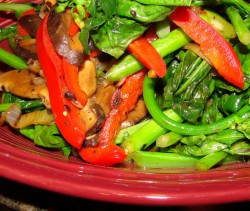
Morganna’s Simple Vegetable Stir Fry
Ingredients:
3 tablespoons canola oil
1 medium onion, thinly sliced
1 tablespoon fermented black beans, lightly crushed
10 large fresh shiitake mushrooms, stems removed, caps cut into 1/4″ thick slices
3 garlic cloves, peeled and finely minced
2 tablespoons dark soy sauce
1 teaspoon raw or brown sugar
1/2 pound gai lan, thick stems removed and discarded, the rest cut into 2″ pieces
1/4 cup chicken or vegetable stock or broth
1 sweet red bell pepper, cored, seeded and cut into 1/4″ thick strips
2 tablespoons oyster sauce
1/4 teaspoon sesame oil
Method:
Heat wok until it smokes, then add canola oil, and allow to heat thirty seconds more, until the oil shimmers with movement.
Add the onion and stir fry about a minute, until it begins to take on color. Add the black beans,a nd stir fry for another thirty seconds or so.
Add the mushrooms, and continue stir frying. When the mushrooms shrink, after about a minute, add the garlic, soy sauce and sugar and stir fry for about another thirty seconds. Add the gai lan and the broth or stock, and bring mushrooms up to the top of the gai lan, scooping the greens close to the bottom of the wok. When the leaves to the gai lan brighten in color and wilt, add the bell pepper and stir fry for another thirty seconds.
Add the oyster sauce and stir fry to combine thoroughly and to heat it through. Remove from heat and drizzle with sesame oil, giving the dish a final stir before scooping it onto a heated platter and serving with steamed rice.
This is the final post on my series of how to create your own simple Chinese stir fried dishes. If anyone uses these ideas to make their own stir fries, and you are interested in me featuring it here, send me a link to it on your blog (or, if you have no blog, send me photos and your description) and I will post a link here in a future post, or will write a post featuring your recipes.
Happy cooking, folks!
Creating Your Own Foolproof Chinese Stir-Fry–Step Three: The Condiments
What exactly is a condiment?
In the context of this series of posts on creating your own simple Chinese stir fried dishes, a condiment is a bottled or jarred liquid or paste that is used in fairly small amounts to enhance the natural flavors of the main ingredients of the dish without overpowering them.
If your main ingredients are the stars of the show, and the aromatics are the character actors who add pizazz and oomph to the production, condiments are the hard working supporting cast who help the stars shine without making themselves the center of attention. The aromatics, like character actors, often need to be reigned in to keep them from completely upstaging the stars, but condiments are not so pushy. Their main purpose is to add flavor to food without drawing too much attention to themselves in the process.
I wrote a post about the basic staples of the Chinese pantry a while back, and it is a great introduction to the most commonly used condiments in the Chinese kitchen. I also wrote separate posts about soy sauces, soybean pastes and ground bean sauce, which will be helpful for those wanting to get more specific information on these particular condiments.
What I am more interested in talking about in this post is how to combine three different condiments into a cohesive, flavorful sauce for a simple stir fried dish which consists of a protein ingredient, a green vegetable and another vegetable.
In addition to the sauces listed in the basic Chinese pantry post (light soy sauce, dark soy sauce, rice wine or dry sherry, rice vinegar, oyster sauce, hoisin sauce, ground bean sauce, toasted sesame oil, and chile garlic sauce) there are two more ingredients that I will consider as condiments in the context of this series: sugar (white or raw) or honey, and citrus juice, such as lemon or orange.
By combining three ingredients from this list in careful proportions, it is possible to make a nearly endless array of flavored sauces for simple stir fries. Classic combinations abound, and it is useful to know about them, and experiment with them, but do not feel constrained by them.
Probably the most versatile trio of condiments for stir frying is the combination of soy sauce (light or dark) with rice wine or sherry and sesame oil. This mixture, with rice wine making up the bulk of the volume and providing sweetness, soy sauce bringing in the salt component and adding savory umami goodness, and sesame oil adding a nutty smokiness, tastes good with anything. Using light soy sauce in the mixture will give chicken, fish, tofu or pork a delicate flavor that enhances the natural tastes inherent to the main ingredients. Made with dark soy sauce, beef, bison, pressed tofu and shiitake mushrooms will sing.
The ratio I tend to use in mixing the wine with the soy sauce (which I will use both as a marinade and a cooking sauce) is 3 or 4:1, with the wine being the greater value. Toasted sesame oil, because it is strongly flavored and has a low smoking point, is always used in very small amounts at the end.
Another combination which is potent and flavorful is the mixture of dark soy sauce, rice vinegar and hoisin sauce, with the ratio being somewhere along the lines of 1:1:1/2-1. (The hoisin sauce amount depends on your personal taste. I go easy with it, because I think it can overpower a dish, but some people love it and would use it more along the lines of 1:1:1.) These three condiments together make a musky sweet and sour sauce that is a far cry from the sugary, florescent pink concoctions familiar from the menus of typical Chinese-American take-out joints.
If I were making a marinade for a dish using this classic trio of flavors, I would not use the vinegar in the marinade, but would either use soy sauce alone or use soy sauce and hoisin sauce. The reason is that vinegar boils at a lower temperature than water; if you add it early in the stir frying process, it will cook away and you will not taste it. It should be added close to the last minute for the best flavor effect.
A simple combination for stir fried beef and greens is the mixture of soy sauce, sugar or honey and oyster sauce. The ratio for this mixture is 1:1/4:1-2. The amount of oyster sauce used is variable depending on how much you like the flavor. I tend to use about twice as much oyster sauce as soy sauce when I cook with it, but then, I love the savory oceanic flavor it gives, particularly in beef with gai lan or kale. It is quite simply wonderful, particularly if you get a premium oyster sauce. All of these ingredients are safely used in marinades. The addition of sugar to any marinade will help the meat or tofu brown when it hits the hot wok.
A mixture that is delicious with both tofu and chicken is ground bean sauce, rice wine and sugar. The ratio is 1:2:1/8–the sugar is used primarily to balance the salt in the ground bean sauce, not to give a flavor of its own. All three ingredients can be used in a marinade.
Now, when it comes to making a marinade or making a separate sauce to be added at the end, I tend to be the sort of person who either uses all of the sauce ingredients in the marinade, or I split them up and use part in the marinade, and part to deglaze the wok during cooking. I don’t tend to make a sauce at the end. If you review my Stir Fry Technique: Ten Steps to Better Wok Cookery post, you will see my reasoning for making sauces as I go instead of at the end. In short, it is because you end up with a tastier sauce and a more integrated, flavorful dish than you would if you mixed up a sauce and added it at the end of stir frying.
So, how much marinade do I suggest you mix up, and how much liquid (usually wine) do I suggest you keep back for deglazing? Well, for most purposes you don’t need much more than about three tablespoons of marinade for about a pound or a pound and a half of protein. Really, you don’t need much. Once it is mixed with cornstarch, it will stick to the protein and sort of sink into it, thus making any extra superfluous. Then, for delgazing, you only need a tablespoon or so. Trust me–you won’t need much.
Please undestaned that all of these ratios and measures are approximate, and are based on my tastes, not yours. Experiment, and don’t be afraid to try new combinations. That is what this series is about–giving general guidelines in an easily remembered format to help folks strike out on their own and make Chinese foods that not only taste good, but reflect the tastes of the cook and his or her family and guests.
Have fun, and if you are ever in doubt about how a combination of ingredients will taste, mix bits of them together in a cup, dip your finger in and taste. Adjust as needed, and go from there.
The possible combinations are nearly endless. Play around, and make up your own flavor mixtures, and never be afraid of experimentation. Remember that while I have gained much of my knowledge directly from chefs and experienced Chinese home cooks, as well as from extensive study from books, much of my expertise has come from experimentation, observation and the occasional accident.
Cook fearlessly, and when you strike upon something you particularly like, record it so you can remember it for next time.
Powered by WordPress. Graphics by Zak Kramer.
Design update by Daniel Trout.
Entries and comments feeds.

